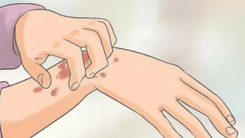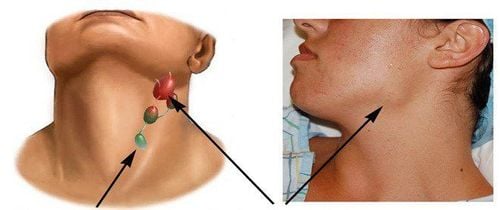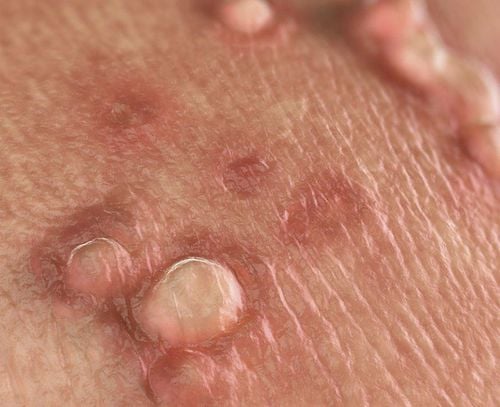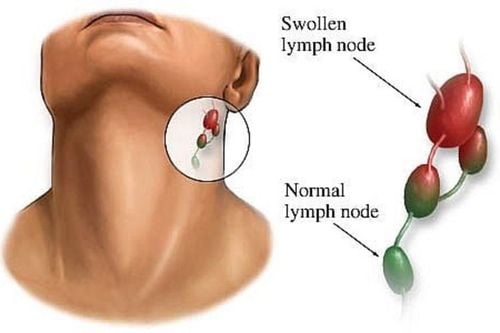This article is professionally reviewed by MD. Lê Thị Minh Hương, an Emergency and Critical Care specialist at the Department of Emergency and Intensive Care, Vinmec Nha Trang International Hospital. Dr. Hương has over 06 years of experience in diagnosing and treating internal diseases, emergency medicine, and critical care.
Groin lymph node swelling is an inflammation of lymph nodes in the groin area, commonly caused by sexually transmitted bacterial infections.
1. What Is Groin Lymph Node Swelling?
The groin is the region between the thigh and pelvis. Groin lymph nodes are divided into superficial and deep groups, functioning to drain lymphatic fluid back into the circulatory system. Swelling in these nodes often signals conditions affecting the legs, lower abdomen, anus, or external genitalia.
Groin lymph node swelling refers to inflammation of lymph nodes in this area, which may present with tenderness or pus formation. When ruptured, these nodes can resemble ulcers in the groin. This syndrome affects both men and women and is frequently linked to sexually transmitted infections (STIs).
Swelling can occur on one or both sides of the groin. Normal lymph nodes are about 1 cm in size; nodes measuring 1.5 cm or larger are considered abnormal.
2. Causes of Groin Lymph Node Swelling
Groin lymph node swelling can result from several causes, but the most common ones are infections, cancers, or reactions to drugs and vaccines.
2.1 Infections
Systemic or localized infections can lead to groin lymph node swelling, including:
- Sexually transmitted infections (STIs): Syphilis caused by Treponema pallidum, Chancroid caused by Haemophilus ducreyi, Gonorrhea, herpes, and others.
- Epstein-Barr virus infection.
- Plague.
- Toxoplasmosis, often accompanied by symptoms like fatigue, headache, and fever.
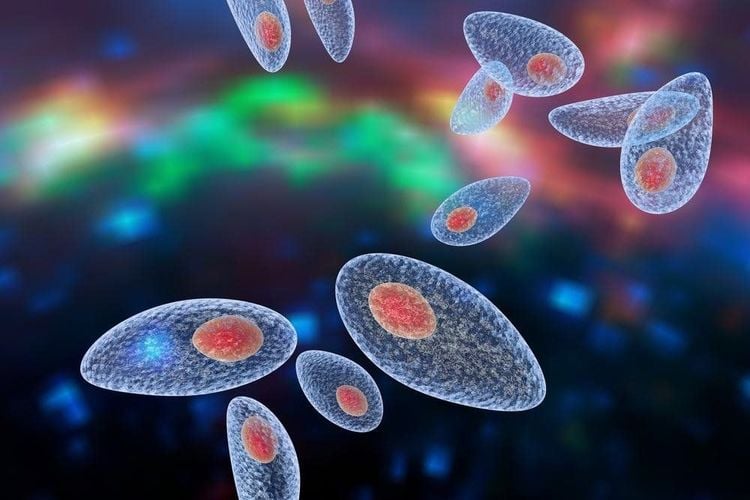
2.2 Tumors and Cancers
Certain tumors and cancers affecting regions drained by groin lymph nodes may cause swelling, such as:
- Leukemia: Cancer of blood-forming tissues, including lymphatic systems and bone marrow.
- Lymphomas: Includes Hodgkin and non-Hodgkin types.
- Malignant tumors of the pelvis, anus, or vagina, which can metastasize to groin nodes.
- Testicular cancer.
2.3. Vaccines and medications
- Certain vaccines can cause lymph node swelling, such as those for measles, mumps, typhoid, and rubella.
- Some medications may also have side effects that result in lymph node swelling, though this is very rare. These include: Allopurinol, used to treat gout, Penicillin, Phenytoin and carbamazepine, used to treat bipolar disorder and epilepsy, Pyrimethamine, used to treat malaria.
2.4 Systemic Diseases
Autoimmune or systemic conditions that may cause groin lymph node swelling such as: Rheumatoid arthritis. Systemic lupus erythematosus, Sarcoidosis.
In addition, adenitis, tuberculous lymphadenitis could also cause the swollen of the groin lymph nodes.
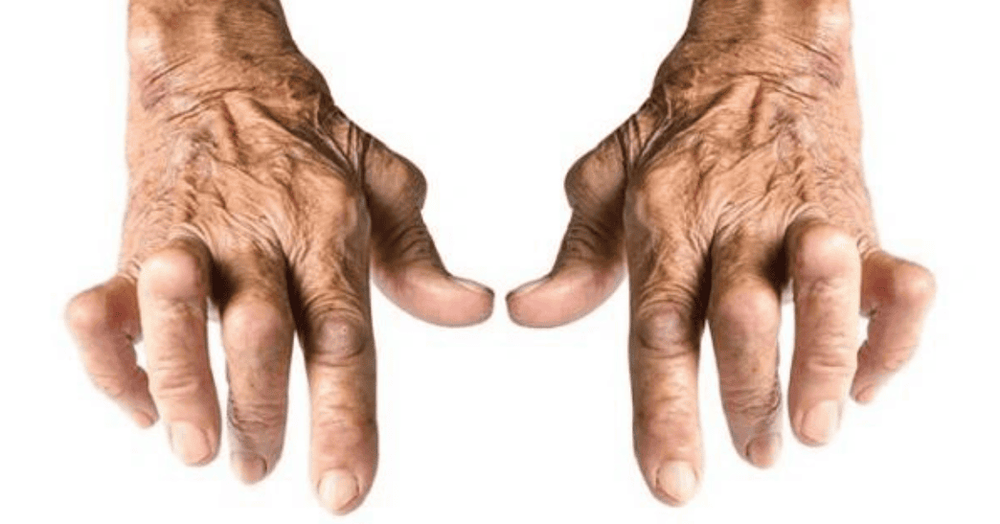
3. Clinical Symptoms
Common symptoms of groin lymph node swelling include:
- Enlarged lymph nodes on one or both sides of the groin. Ulcers, blisters, or small bumps around the anus or genitals.
- Skin or mucosal manifestations such as pustules, rashes, or erythema—especially on the palms and soles.
- Presence or absence of fever.
4. Is groin lymph node swelling dangerous?
Enlarged lymph nodes are a symptom of certain infectious diseases such as syphilis, chancroid, and lymphogranuloma venereum. Therefore, physicians can rely on lymph node examinations, the condition of the nodes, and accompanying symptoms to diagnose these diseases.
4.1. Lymphadenitis caused by syphilis
Primary syphilis: Lymph nodes are typically enlarged, mobile, and localized, most commonly on one side of the groin. Among these, one node is often significantly larger than the others.
Secondary syphilis: Lymphadenopathy spreads to both groins and other regions such as the neck, axillae, and submandibular areas. Patients may also present with additional symptoms, including papules, mucosal patches, rash, alopecia, and sometimes fever.
4.2. Lymphadenitis caused by chancroid
In patients with chancroid, lymphadenitis usually occurs two weeks after the appearance of chancroid ulcers. It typically affects one side of the groin. The affected lymph nodes exhibit redness, warmth, swelling, and pain. When the nodes rupture, they release pus with a chocolate-like appearance, forming slow-healing ulcers with irregular margins.
4.3. Lymphadenitis caused by lymphogranuloma venereum
Lymphadenitis caused by lymphogranuloma venereum typically occurs a few days to several weeks after the appearance of vesicles, small papules, or ulcers. It often involves one side of the groin. Inflamed nodes form a mass, become non-mobile, and eventually soften, releasing pus through multiple sinuses or interconnected tracts. Prolonged disease progression can lead to associated complications such as proctitis, rectal stricture, and perianal fistula.
4.4. Supporting diagnostic tests
Serological tests such as those that used to diagnose syphilis include: Rapid Plasma Reagin (RPR) or Venereal Disease Research Laboratory (VDRL) test, Treponema pallidum hemagglutination assay (TPHA)
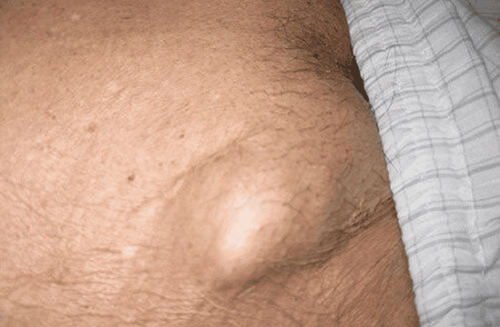
5. How is groin lymph node swelling treated?
For all cases of groin lymph node swelling suspected to be caused by sexually transmitted infections, healthcare professionals need to identify and treat the sexual partner(s) as well. To address the symptom of lymph node swelling, the physician must determine the underlying cause responsible for the swelling. However, groin lymph node swelling is not always caused by an infection; it may sometimes be a benign tumor.
Swollen, soft lymph nodes with a fluctuant consistency can be aspirated through intact skin upon the physician’s indication. If incision and drainage of these lymph nodes could delay wound healing, the physician will carefully consider whether aspiration is appropriate.
Sexually transmitted infections are increasingly prevalent in the community, particularly among young individuals engaging in unsafe sexual activities. Common infections such as syphilis, chancroid, and lymphogranuloma venereum frequently lead to groin lymph node swelling.
Healthcare professionals should provide patients with information and counseling on important aspects, including: The potential consequences of untreated conditions.
The importance of adhering to prescribed treatment protocols and attending follow-up appointments.
Especially, encouraging patients to notify their sexual partners, who should also receive appropriate treatment. Patients should be instructed on the use of condoms to prevent the transmission of HIV/AIDS and other sexually transmitted infections.
In summary, groin lymph node swelling is a symptom of an underlying condition, often related to sexually transmitted infections or other infectious diseases. Therefore, when abnormal signs occur, individuals should promptly seek medical evaluation and treatment.
To arrange an appointment, please call HOTLINE or make your reservation directly HERE. You may also download the MyVinmec app to schedule appointments faster and manage your reservations more conveniently.



